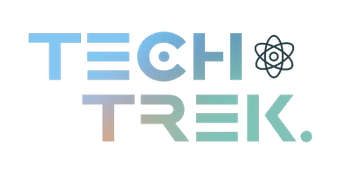The Artificial Intelligence Boom: Revolution or Bubble?
- TechTrek Admin

- Mar 14
- 3 min read
Updated: Apr 22
By Diya Kondapalli
The Peddie School, NJ
Picture this: It’s the year 2030. You wake up to an AI-generated news report, eat a breakfast recommended by an algorithm tracking your diet, and hop into a self-driving car that knows your schedule better than you do. AI has seeped into every corner of life—but is it a marvel of progress or just the latest overhyped trend destined to collapse like a house of digital cards?

A Brief History of Generative AI: How Science Fiction Became Reality
Generative AI—the technology behind eerily human-like chatbots and stunning digital artwork—didn’t appear out of thin air. It’s the result of decades of innovation, built on the foundations of machine learning (ML) and neural networks. Think of these as the digital version of a child learning through repetition—except with access to vast amounts of data and computing power far beyond human capability.
Back in the 1950s, the first neural networks were like infants taking their first steps. By the 2010s, deep learning had propelled AI into a period of rapid growth, leading to the rise of Natural Language Processing (NLP) and Large Language Models (LLMs). Then came OpenAI’s Generative Pre-trained Transformer (GPT), a game-changer capable of writing essays, poetry, and even full-fledged conversations that make it hard to tell whether you’re talking to a human or a machine.
The Building Blocks of AI: Decoding the Terminology
To understand AI’s inner workings, let’s break down some key concepts:
● Natural Language Processing (NLP): The technology that allows chatbots and voice assistants to understand and generate human language.
● Large Language Models (LLMs): AI systems trained on vast amounts of text to produce coherent and contextually relevant responses.
● GPT (Generative Pre-trained Transformer): An AI model so proficient at mimicking human language that it could probably ghostwrite your memoir.
● Machine Learning (ML): A process where computers learn patterns, much like a chef refines a recipe through trial and error.
● Neural Network: A computational system inspired by the human brain, enabling AI to process data and make decisions—without needing coffee breaks.

The Economic Impact of Generative AI: A Blessing or a Curse?
AI is revolutionizing industries at breakneck speed. In healthcare, it’s diagnosing diseases before doctors even detect them. In entertainment, it’s writing scripts that could disrupt Hollywood. Businesses are using AI to enhance customer service, automate tedious tasks, and redefine marketing strategies.
But not all that glitters is gold. With increased automation comes the threat of job displacement. Will AI replace creatives, programmers, and analysts? Perhaps. But just as the Industrial Revolution sparked new industries while rendering others obsolete, AI could pave the way for careers we can’t even imagine yet.
Then there’s the question of cost. Training and deploying these powerful AI models require enormous computing power and resources. Will AI remain in the hands of tech giants, or will it become accessible enough for individuals and small businesses to harness its potential?
AI: A True Breakthrough or an Overinflated Bubble?
Think back to the dot-com bubble. Investors funneled billions into internet startups, only for many to crash and burn. Could AI be following a similar trajectory?
There’s undoubtedly a gold rush mentality, with companies racing to integrate AI into everything from search engines to toothbrushes. But amidst the hype, genuine breakthroughs are happening. The challenge is distinguishing between AI’s transformative potential and exaggerated promises.
Skeptics point to AI’s flaws: hallucinations (producing false or misleading responses), biases in training data, and ethical concerns. Without proper oversight, AI could amplify misinformation or deepen societal inequalities instead of solving problems.
The Road Ahead: Caution or Full Speed Ahead?
Whether AI turns out to be a revolutionary force or a speculative bubble depends on how we navigate its future. History has shown that disruptive technologies bring both triumphs and turbulence. The key is to harness AI’s potential responsibly—balancing innovation with regulation, automation with human creativity.
So, is AI our gateway to a brighter future, or are we heading toward another technological crash? One thing is certain: the AI revolution is already here. The question is whether we’ll steer its course—or be swept away by the hype.
%202_e.png)





Comments